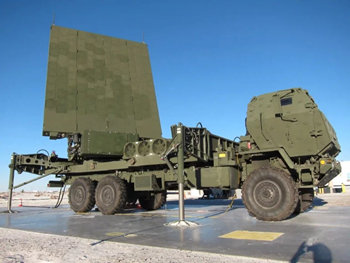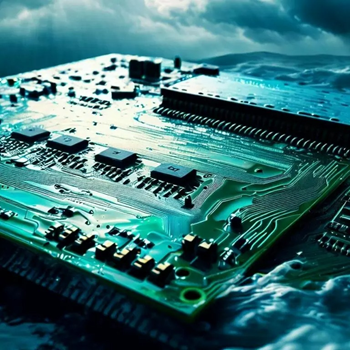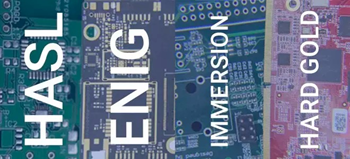The Critical Role of PCBs in Military Radar Systems
Printed circuit boards (PCBs) play a vital role in military radar systems, acting as the backbone for the electronic components and circuitry that enable radars to function. The PCBs in radar systems are absolutely essential for signal processing and control, antenna integration, radio frequency (RF) components, miniaturisation and weight reduction, reliability, and durability. They also allow secure radar communication, system integration and upgradability. PCBs therefore have a huge role to play and a very significant impact on national defence. Military radar systems are used for surveillance, early warning and threat detection, as part of missile defence systems, aerial and maritime security, strategic communication and coordination… the list goes on, but without effective, cutting-edge PCBs, any military radar system is flawed – which could, of course, lead to catastrophic consequences. Decoding military radar systems: An interface with PCB technology The functionality and reliability of military radar systems relies heavily on PCB technology. Let’s look at just a few areas where PCBs enable radar systems to work optimally: Reliability and durability Unsurprisingly, military radar systems need to endure harsh environmental conditions. These include mechanical stress, extreme temperatures and humidity. Boards that are designed and manufactured with these conditions in mind allow radar systems to do exactly what they need to do, whatever the conditions. Signal integrity PBCs provide controlled impedance and minimise signal loss, which is vital for signal integrity. This is especially true in high-frequency applications such as radar systems, which operate in the RF spectrum. Without adequate signal integrity, signal processing and transmission will suffer. Secure communication Protecting sensitive information is understandably vital in military communications, and PCBs can integrate encryption and decryption modules within radar systems. Thermal management PCB technology also helps to dissipate heat creation during the operation of military radar systems. This ensures electronic components remain within their specified temperature ranges, helping reliability and longevity. Upgradability Military technology needs to be adaptable to developments, and radar systems are no different. Thankfully, PCBs allow a modular design in radars, which enables new components and features to be integrated into existing systems with PCB upgrades. This expands the capability of military radar infrastructure and extends the lifespan of existing systems. The evolution of radar PCBs Radar technology has come a very long way, and PCBs are one of the game-changing elements in this field. When it comes to radar PCBs themselves, we’ve seen considerable advancements too. Perhaps one of the most important has been miniaturisation. Technology continues to shrink, so PCB designs have to incorporate complex circuitry within increasingly limited spaces. We’ve touched on this already, but controlled impedance enabled by advanced manufacturing techniques has been another vital evolution, in order to improve signal integrity. Developments in substrate materials and technologies are notable too, providing better thermal management. This means radar systems can operate well even in extreme temperatures. And multilayer PCB design enables power to be distributed efficiently, meanwhile cutting down on electromagnetic interference between board components. As well as these points, the development of features such as embedded passives and active components onto boards, minimises complexity while enhancing functionality. Design considerations for radar PCBs For radar systems to perform optimally there are a number of features and design considerations that must not be overlooked. Materials High-frequency laminates with a low dielectric constant are a popular choice for radar PCBs, thanks to their superb electrical properties. The material choice should consider heat dissipation, signal loss and impedance control. Multilayer boards We’ve already touched on the benefits of multilayer boards, which can optimise signal integrity, while making more compact designs possible. Thermal management The high-power transmission levels in military radar systems mean thermal management is a key consideration. When planning a board’s layout a lot of thought should be given to how to avoid overheating – such as embedded copper heatsinks or metal core circuits, for example. Antenna array size This has a notable effect on the design of PCBs so should be carefully considered. Better integration is available with more compact designs, but miniaturisation needs to be weighed against signal quality so that accuracy and range capabilities are maintained. Layout design The layout design of a radar PCB is another important consideration. Proper grounding techniques, RF shielding and controlled impedance traces are key to minimise signal interference. The placement of components must be carefully planned to reduce parasitic effects on system performance. Industry compliance Of course with military technology, as well as systems in other industries, compliance must be considered. This is important to ensure optimum operability and interoperability of radar systems and ensure compatibility of components from manufacturers. Cost-efficiency and sustainability in military PCB production The most cost-effective way to purchase PCBs is often to buy from overseas, but there are pitfalls to consider: • Carbon footprint – China is the largest manufacturing base for PCBs, and while prices per unit may be cheaper there than manufacturing elsewhere, there is a significant cost in terms of carbon emissions. Local PCB sourcing is a much more sustainable option, and the delays caused by long-haul transportation can be avoided too. • Material sourcing – Suitable and reliable materials are vital in order to create effective, efficient PCBs, but there are more and less sustainable ways of sourcing them. With an overseas supplier, you’re likely to have less insight into environmental regulations than with a UK supplier. • Waste management – PCBs are made using some hazardous materials, which can cause harm to the environment if not disposed of properly. Again, with an overseas supplier, you’re not likely to know how effectively this has been done. • Careful handling – During overseas transport, as well as the carbon footprint, there’s a greater risk of component damage if PCBs are not packed carefully. Sustainability in military PCB production means considering environmental and social impact. A UK supplier should provide supply-chain transparency, from the origins of components right through to how they’ll be disposed of. They should also recycle and reuse where possible, and generally be open about their sustainability practices. Ceramic PCBs: The vanguard of military radar systems Ceramic PCBs play an important part in military radar systems. The following characteristics of these particular boards are particularly valuable: • Electrical insulation – Ceramic PCBs have excellent insulation qualities. This is vital in systems where separate electronic components need to be isolated from each other, to prevent signal interference and ensure the circuitry functions optimally. • High thermal conductivity – Ceramic PCBs can dissipate heat quickly thanks to their high thermal conductivity, helping boards function even when radar systems create a considerable amount of heat. They also have a low coefficient of thermal expansion, enabling them to work in extreme or rapidly varying temperatures. • High-frequency applications – Ceramic boards are well suited for high-frequency applications – a quality that’s vital in military radar systems. Conclusion It’s hugely important for national defence that military-grade PCBs are reliable, secure, durable and efficient. ABL Circuits is a British manufacturer and supplier of PCBs for military and defence, as well as other industries. ABL offers comprehensive PCB and manufacturing solutions for military applications, with a bespoke end-to-end service, and the fastest lead times in the UK.Visit the ABL Circuits Ltd website for more information on The Critical Role of PCBs in Military Radar Systems





